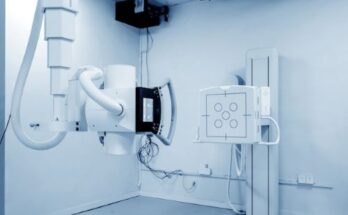Utilisation of Vascular Access Systems Depends Upon Medical Conditions and Requirements
Central Venous Access systems are essential for the care of many sick children. In order to reduce the risk of infection and thrombosis and also to increase the line longevity, appropriate type of catheter must be selected and inserted in a standardized procedure. Vascular access systems market covers implantable-ports, Huber needles, (PICCs) peripherally inserted central catheters, (CVCs) central venous catheters, dialysis catheters, needleless connectors, needles and syringes. The usage of these medical systems depends on various medical conditions and its requirements that may include the purpose for its requirements, size of the device, the duration of time it needs to be in-situ.
Peripheral Vascular Access Systems- Appropriate for Short-Term Therapies
Peripheral vascular access systems are the most appropriate for short term therapies as they cause less irritation. A peripherally inserted central catheter is inserted through antecubital fossa vein, which may be basilic or cephalic, further progresses through the superior vena cava. The position of the catheter’s tip is radiologically confirmed. The procedure are relatively easy to insert. This makes them a potentially more economically option. The risk involved for the rate of thrombosis and sepsis is lowered. The risk of large vein perforation and pneumothorax is also reduced, which is linked to centrally inserted catheters. Whereas central vascular access systems are used in cases like medicines having greater pH than 9.0 or less than 5.0, parentral nutrition with glucose concentration greater than 10%, infusion fluids which are known irritants, intra venous inotropes and vesicants.
Tunneled Central Venous Catheters Restrict Infection from Reaching the Bloodstream
Tunneled central venous catheter are known as Hickmann lines. These are more often required when the patient is on long-term infusion therapy, example chemotherapy, and total parentral nutrition and also provide access for taking blood samples. This type of line is manufactured in the form of large-bore silicone line having single or double lumen. Tunneled lines can be used for long-term infusion therapy with the time duration ranging from months to years. The tip of the catheter is directly inserted into the subclavian vein or jugular and then it is threaded through to end up in the superior vena cava. Various tunneled central venous catheters are equipped with a fibrous cuff. These are assembled in the skin tunnel. This enables the tissue of the patient to bond with the line so as to create a secure fix. This mechanical barrier stops infection from reaching the bloodstream to cause sepsis. These central venous catheters can be of two types, namely open-ended or valved. This type of line insertion is done usually in theatre or radiology with the help of an image intensifier for the correct positioning of the catheter.
To remain ahead of your competitors, request for a sample – https://www.futuremarketinsights.com/reports/sample/rep-gb-1737
Insertion of Non-Tunneled Catheter Requires Strict Sterile Conditions
The non-tunneled type is often known as a short-term percutaneous central venous catheter and is most commonly used central venous catheter in secondary care. It is directly inserted into a central vein. Strict sterile conditions are required for the insertion of this type of catheter. The positioning of non-tunneled catheter is to be confirmed using radiological devices. The Jugular region (area near to the neck) is more susceptible to infection because of the difficulty of placing the catheter to the neck of the patient securely. Implantable ports are vascular access systems inserted into the chest, antecubital area or abdomen. They are useful in long-term intravenous therapy, blood sampling, bolus injections and total parentral nutrition.
Adoption of Implantable Ports Lowered Post-Recent Advancements in Vascular Access Devices
The recent advancement in the vascular access devices such as central venous catheter and peripheral inserted central catheters have lowered the use of implantable ports. Ports are inserted subcutaneously. Implantable ports are often preferred by the patient because they are less visible. Medical staff prefer them as they are linked with less risk and are easily accessed. These ports can remain in situ for up to seven days. Ports have been used for epidural pain relief and can be used alternatively for subcutaneous infusions. The condition of being unobstructed is maintained by rinsing heparin solution after definite intervals. It involves minimal manipulation and care.
Vascular Access Systems Market: Drivers and Restraints
As some of the central venous catheter can be in place for months together but replacement is required for few catheters due to the poor functioning. Certain types of ports have a life of reservoir septum of about 1000 puncture that is not at all suitable for patients who require daily IV access. Few patients have poor vein condition which is not at all suitable for placement of catheter. Long term access of the veins eventually lead to the vein damage (example: long term IV feeding). These all factors contributes to the restraints of the vascular access market.
Globally, there is a constant rise in number of diseases like as cancer, trauma, and acute illness which has significantly raised the demand of proficient vascular access systems in recent years by healthcare professionals in hospitals, emergency rooms, and operation theaters. Further contributing to the driver for the vascular access system market.
Get a Tailored Made Report to Match Your requirements, Ask from Market Research Expert – https://www.futuremarketinsights.com/ask-question/rep-gb-1737
Vascular Access Systems Market: Overview
Depending on geographic region, global vascular access system market is segmented into seven key regions: North America, South America, Eastern Europe, Western Europe, Asia Pacific, Japan, and Middle East & Africa.
North America holds the largest share of the global vascular access systems due to the cumulative aging population and extensive technological advancement.
Vascular Access Systems Market: Region-wise Outlook
Based on geographic region, global vascular access system market is segmented into seven key regions: North America, Latin America, Western Europe, Eastern Europe, Asia Pacific excluding Japan, Japan, and Middle East & Africa.
North America holds the largest share of the global vascular access systems owing to the cumulative aging population and extensive technological advancement.
Cluster Headache Syndrome Market: Key Players
Nipro Medical Corporation, B. Braun Medical Inc., Edwards Life sciences Corporation, Medtronic, Siemens Medical Solutions Inc., Baxter, , GE Healthcare Inc., Teleflex Medical and. Becton, Dickinson and Company.
The research report presents a comprehensive assessment of the market and contains thoughtful insights, facts, historical data, and statistically supported and industry-validated market data. It also contains projections using a suitable set of assumptions and methodologies. The research report provides analysis and information according to categories such as market segments, geographies, types, technology and applications.
The report covers exhaustive analysis on:
- Market Segments
- Market Dynamics
- Market Size
- Supply & Demand
- Current Trends/Issues/Challenges
- Competition & Companies involved
- Technology
- Value Chain
The report is a compilation of first-hand information, qualitative and quantitative assessment by industry analysts, inputs from industry experts and industry participants across the value chain. The report provides in-depth analysis of parent market trends, macro-economic indicators and governing factors along with market attractiveness as per segments. The report also maps the qualitative impact of various market factors on market segments and geographies.
By Product
- Central Vascular Access System
- Central Vascular Catheter
- Non tunneled
- Tunneled
- Implanted Ports
- Peripheral Vascular Access System
- Peripheral Catheter
- Midline Catheter
By End User
- Hospital Pharmacy
- Ambulatory Surgical Centre
- Hospital Pharmacy
- Catheterization Lab
For in-depth insights, Download a PDF Brochure – https://www.futuremarketinsights.com/reports/brochure/rep-gb-1737
Report Highlights:
- Detailed overview of parent market
- Changing market dynamics in the industry
- In-depth market segmentation
- Historical, current and projected market size in terms of volume and value
- Recent industry trends and developments
- Competitive landscape
- Strategies of key players and products offered
- Potential and niche segments, geographical regions exhibiting promising growth
- A neutral perspective on market performance
- Must-have information for market players to sustain and enhance their market footprint



